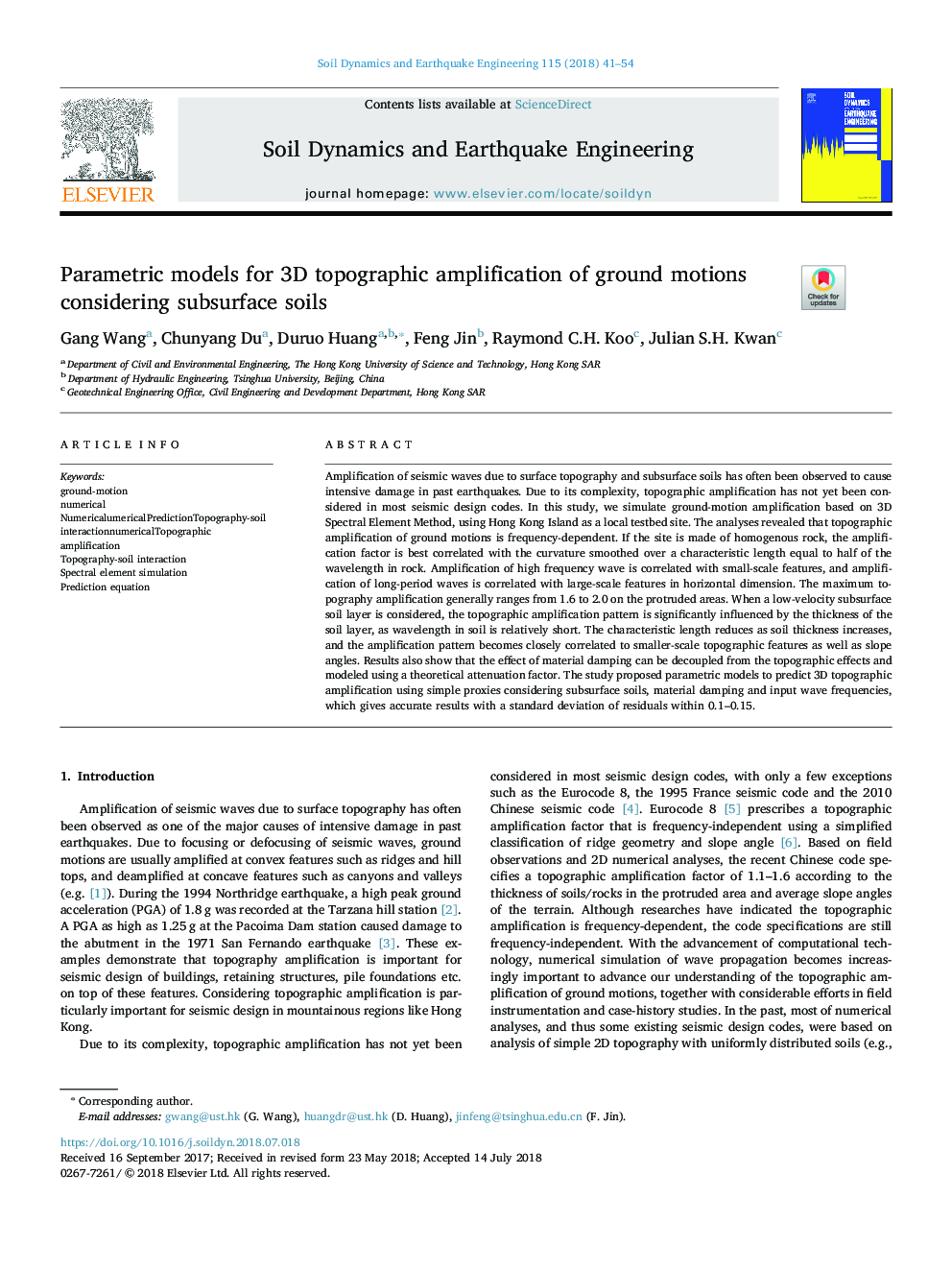| Article ID | Journal | Published Year | Pages | File Type |
|---|---|---|---|---|
| 8947152 | Soil Dynamics and Earthquake Engineering | 2018 | 14 Pages |
Abstract
Amplification of seismic waves due to surface topography and subsurface soils has often been observed to cause intensive damage in past earthquakes. Due to its complexity, topographic amplification has not yet been considered in most seismic design codes. In this study, we simulate ground-motion amplification based on 3D Spectral Element Method, using Hong Kong Island as a local testbed site. The analyses revealed that topographic amplification of ground motions is frequency-dependent. If the site is made of homogenous rock, the amplification factor is best correlated with the curvature smoothed over a characteristic length equal to half of the wavelength in rock. Amplification of high frequency wave is correlated with small-scale features, and amplification of long-period waves is correlated with large-scale features in horizontal dimension. The maximum topography amplification generally ranges from 1.6 to 2.0 on the protruded areas. When a low-velocity subsurface soil layer is considered, the topographic amplification pattern is significantly influenced by the thickness of the soil layer, as wavelength in soil is relatively short. The characteristic length reduces as soil thickness increases, and the amplification pattern becomes closely correlated to smaller-scale topographic features as well as slope angles. Results also show that the effect of material damping can be decoupled from the topographic effects and modeled using a theoretical attenuation factor. The study proposed parametric models to predict 3D topographic amplification using simple proxies considering subsurface soils, material damping and input wave frequencies, which gives accurate results with a standard deviation of residuals within 0.1-0.15.
Keywords
Related Topics
Physical Sciences and Engineering
Earth and Planetary Sciences
Geotechnical Engineering and Engineering Geology
Authors
Gang Wang, Chunyang Du, Duruo Huang, Feng Jin, Raymond C.H. Koo, Julian S.H. Kwan,
